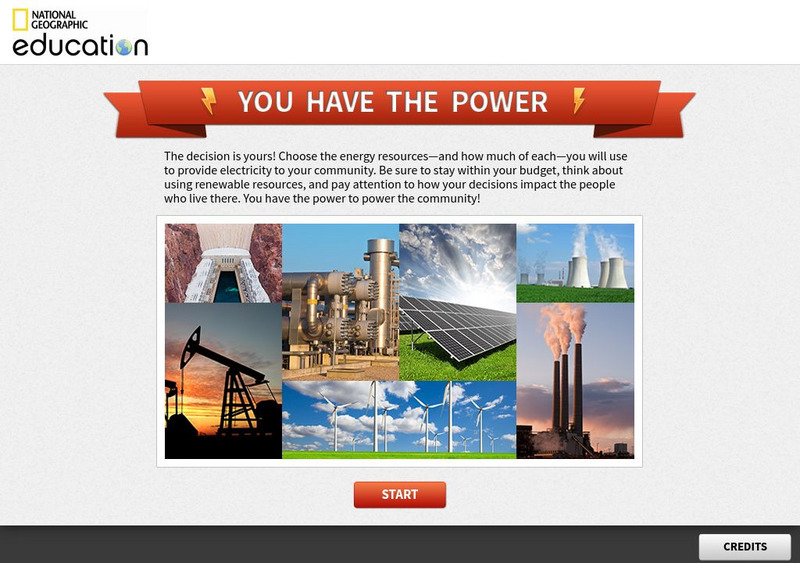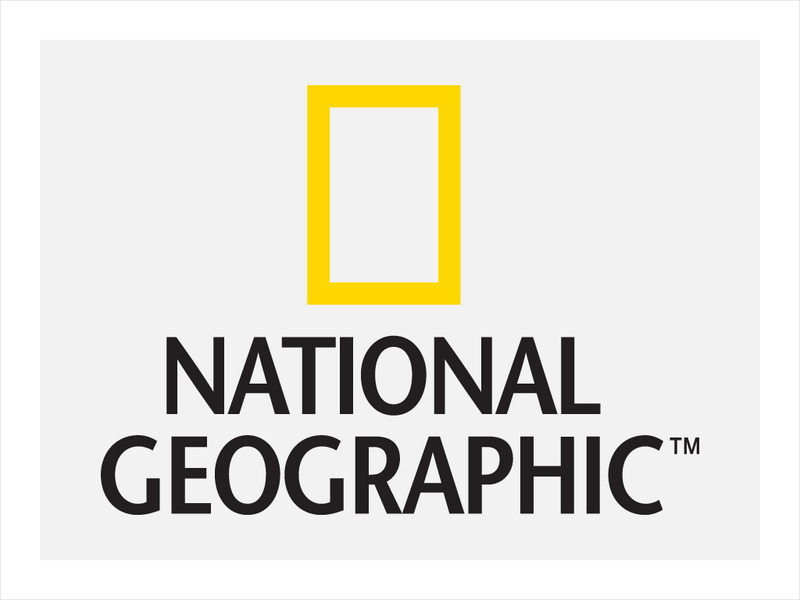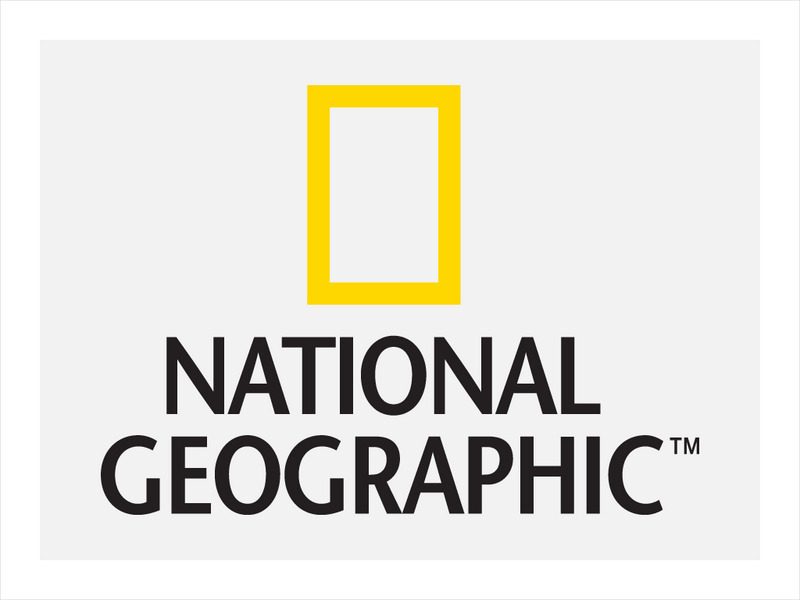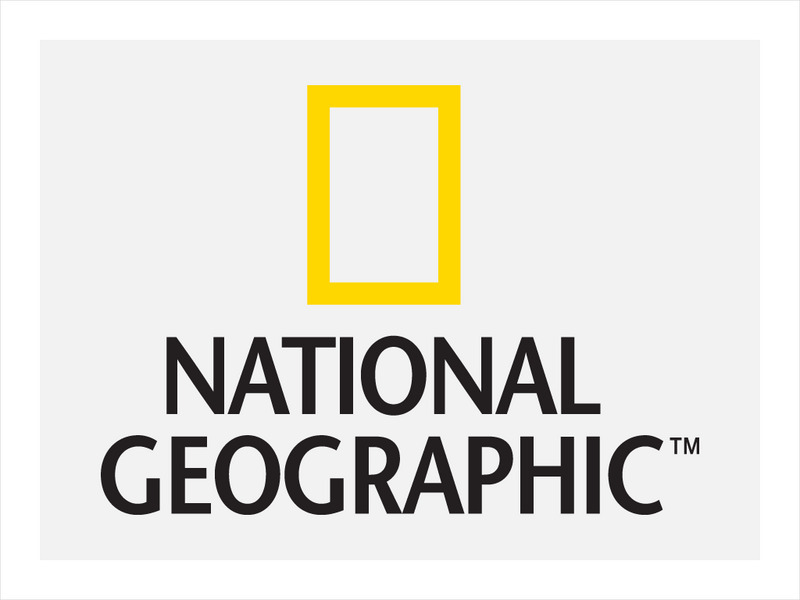National Geographic
Choosing Energy-Efficient Appliances
What makes this lesson stand out from others about our personal energy use is the myriad of high-quality materials that support it. Find clear images, well-designed worksheets, links to related websites, and a presentation rubric for the...
National Geographic
Energy Sustainability in the Klamath Basin
High schoolers research the hydroelectric plant removal project that is underway on the Klamath River. They consider the replacement of hydroelectric dams with geothermal power plants and form an argument based on their viewpoints. Since...
National Geographic
Global Patterns of Human Migration
A person can synthesize information from many different sources, such as websites and maps. To better grasp the concept of human migration, the class first discusses the nature of human migration, and then analyzes several maps. They use...
National Geographic
Investigating Pressure
Play "Would You Rather" with your physical science class as an anticipatory set. Each game question is related to the pressure put on an area of the body. Let this activate a discussion on forces, pressure, and area. Give your class...
National Geographic
You Can Take the Pressure!
Put the pressure on as your class endeavors to construct an indestructible submersible! By watching a video, participating in class discussions, and the applying the complete scientific process, learners design a capsule that is slightly...
National Geographic
Recognizing Native American Perspectives: Thanksgiving and the National Day of Mourning
Thanksgiving—is it a national celebration or the National Day of Mourning? That depends on the point of view. Young historians analyze a speech written by Wamsutta James that presents a Native American view of Thanksgiving. The lesson...
National Geographic
Energy Solutions: Tapping into the Topography of Lake Turkana
Whip up some wind in your class with this blustery lesson plan about the Lake Turkana wind energy project. Pupils view a video clip about the pros and cons of using wind turbines to generate electricity. They read two articles and take...
National Geographic
Geography of Oil Drilling in the Gulf of Mexico
Prior to class, individuals visit the Department of Energy website to examine the process of refining oil. After discussing what they learned, they find the Gulf of Mexico on a richly illustrated map that specifically indicates...
National Geographic
Birds, Feathers, and Oil
Point out the Gulf of Mexico and tell your class about the 2010 oil spill. Give each emerging ecologist a large bird feather. Have them make observations about it and then predict what would happen if it were to be placed in oil. Have...
National Geographic
Altitude: What's in the Air?
Introuduce your scientists to the differences in air at varying altitudes with a colorful explanatory graph. After some discussion, they view unbelievable footage of mountain-climbing Leo Houlding and a narrative about how he might do...
National Geographic
The Importance of Sharks: You Do The Math!
Elementary ecologists examine trophic relationships using a coral reef food pyramid as an example. They play a game applying math skills that ultimately demonstrate the important role of the ever-scary top predator, the shark. This is a...
National Geographic
Earth's Water Cycle
National Geographic's MapMaker Interactive is a wonderful tool to use when introducing your hydrologists to the water cycle. Show your class Earth's oceans and the movement of water from place to place. Then, using a large colorful...
National Geographic
Coral Reef Fish Survey Simulation
With a discussion and a brief film, introduce populations. Using paper fish models, your class participates in a simulation in which they survey numbers of fish. As a class, they tally up the different types. The challenge with this...
National Geographic
Coral Reefs: Ecosystems Full of Life
Coral reefs contain some of the most diverse ecosystems on Earth. Introduce reef residents to youngsters with a three-minute video. While the content is educational, it is not particularly engaging or clear. You may choose to skip the...
National Geographic
Create a Marine Protected Area
Draw your class in by working together to complete a chart of ocean users and uses. Connect the users to how they use the ocean where possible. Introduce the class to ways that areas of the ocean are protected, and take them to the NOAA...
National Geographic
National Geographic: You Have the Power
What factors are important to consider in order to make informed energy decisions? In this interactive, you select one of three locations and the energy resources and then try to provide 100% of that community's electricity needs while...
National Geographic
National Geographic: Encyclopedia: Core
Understand the characteristics and features of Earth's core from this detailed article. Includes high-quality illustrations, a downloadable poster, a video, and links to other resources.
National Geographic
National Geographic: A River Puzzle
Use this lesson plan from National Geographic Education to explore rivers and their watersheds, using where they live as an example. Necessary vocabulary for the lesson is included as well as a puzzle for students to figure out that...
National Geographic
National Geographic: Exploring the Chesapeake: Then and Now
Resource provides an interactive map that takes you to places on the Chesapeake Bay that John Smith explored and you find out the historical events that occurred. Pictures and drawings of time accompany the explanations.
National Geographic
National Geographic: My Wonderful World: World Wall Maps (Pdf)
Make your own full color or black and white mosaic wall map on your own printer. World maps, continents, Asian regions, and oceans are available for downloading, printing, and assembling.
National Geographic
National Geographic: Your Ocean
This site provides a lesson plan for educators to use when teaching about the Ocean. In addition, there are many other related links and information about the ocean.
National Geographic
National Geographic: The Electoral College
Discover how the United States elects its president by using an Electoral College. A map shows how the Electoral College's 538 members are distributed throughout all fifty states and the District of Columbia.























